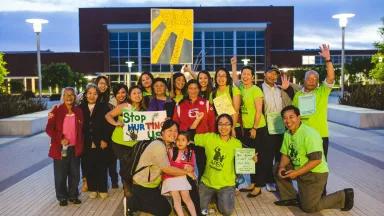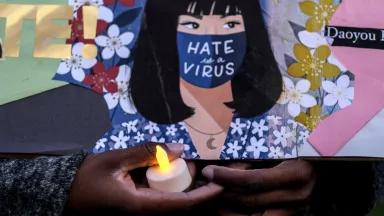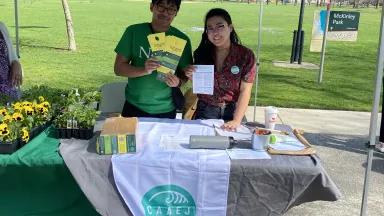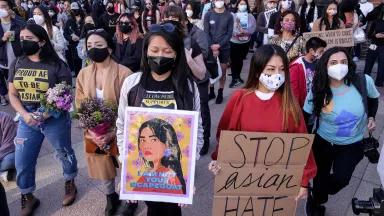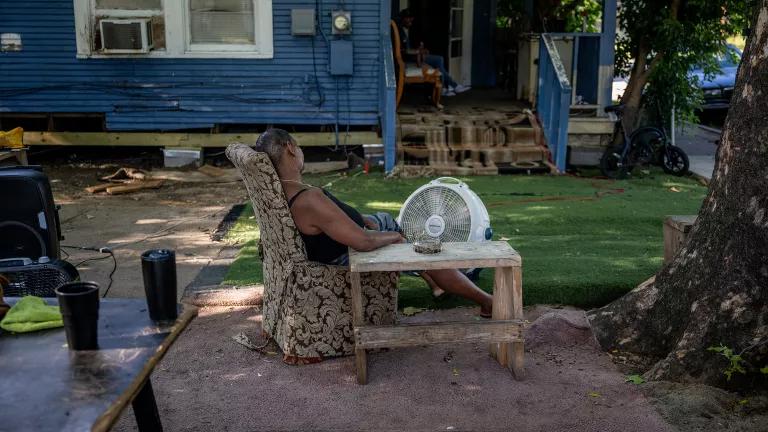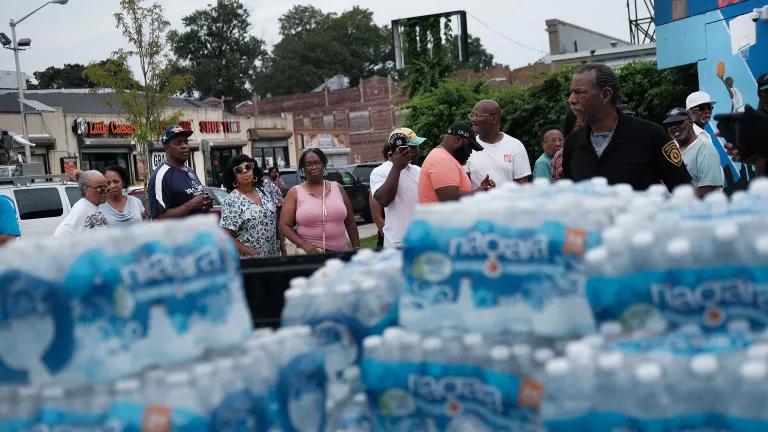When Asian Americans Are Missing from Public Health Data, It’s Harder to Protect Them
If science is the search for truth, then let’s get real by ensuring research actually represents who’s out there and what’s happening to them, from COVID-19 to climate change.
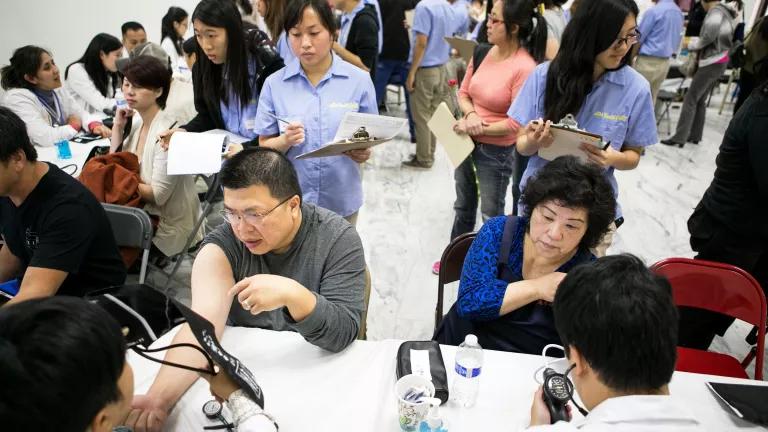
Patients talk to medical professionals and get their blood pressure measured during the Hsi Lai Temple Health Fair in Hacienda Heights, California, on May 10, 2015.
If the past year of COVID-19 has shown the world anything, it’s that the task of public health is always trying to get an accurate picture of reality so that it may stop or prevent harms. Public health researchers do this through science—theorizing, gathering data, analyzing the statistics, and putting forth conclusions based on the evidence that is then subject to the scrutiny of peer review—so that the evidence, facts, and truth can guide policymakers to improve people’s health.
But what this past year has made much more evident is that we are way behind where we should be when it comes to scientific data on Asian Americans and Pacific Islanders. This perhaps mirrors what we are seeing in society as we continue to grapple with violent acts against Asian Americans that barely register in the media, or when they do, are not noted as racist. In terms of the climate crisis and its effects on health, the data are either missing for these groups, crudely lumped together, or excluded from considerations in environmental health analyses to begin with. Our current evidence base is full of gaps, reflecting a lack of visibility, representation, and nuanced analysis of Asian Americans and Pacific Islanders that hinders effective government responses to protect people from harm.
We fully note the imprecision of the grouping of Asian Americans with Pacific Islanders, which began during the Reagan administration for political convenience. For the purposes of this post, we concentrate on Asian Americans, a designation we both identify with.
We can only achieve meaningful action when we are visible and counted
As with the nation’s epidemic of gun violence, the lack of sustained investment and effort in analyzing conditions on the ground has obscured the true nature of harms that Asian American communities face on a daily basis, and delayed policy actions that could save lives. The U.S. Centers for Disease Control and Prevention (CDC) is finally enabled to embark on new efforts to research the causes and effects of gun violence, but this agency remains underfunded and under resourced when it comes to other public health threats, including climate change.
This week’s release of updated U.S. census data for 2020 highlights the benefits of robust population data collection efforts, but also shows that we have a long way to go in better understanding what’s happening in communities and making use of existing data sets to inform policies that can reduce health disparities. Demographic surveys show that Asian Americans are the fastest-growing ethnic group in the United States, but many hesitated to complete the 2020 census for a number of reasons. In general, even after population counts have been tallied, public health researchers struggle to understand the impact of pollution on the health of these communities.
Researchers must recognize diversity within the Asian American population
Asian Americans are often grouped into a single category in general data collection, which our colleague Kimi Narita recently described as being “lumped together as a monolith that erases the disproportionate impacts on disparate groups like Pacific Islanders, Vietnamese, and Filipino communities.” We see this in health studies too: For example, a recent analysis on racial-ethnic disparities in air pollution exposures grouped 15 million Asian Americans into a larger “White/Other” category along with 196 million Caucasian/White people, 2 million American Indians, and 8 million people representing other races. This choice prevented the researchers from exploring whether Asian Americans, like Black and Hispanic people who were each analyzed as separate groups, experience a disproportionate air pollution burden (that is, excess exposure, relative to the exposures caused by use of material goods). This should seem obvious, but it unfortunately isn’t.
It’s crucial that public health systems enable collection of more detailed information on race and ethnicity because the existing evidence points to important health disparities—and there is much more to learn if and when data can be properly collected and analyzed further. Just this week, a national study demonstrated that people of color, including Blacks, Hispanics, and Asian Americans, are exposed to higher levels of dangerous air pollution than white counterparts from many types of sources, such as industrial plants, construction activities, cars, and trucks. That fresh evidence aligns with a 2019 study of 3,520 survey respondents, which found that people of color in the United States are exposed to significantly higher levels of air pollution compared to white people. It also showed that Asian Americans are exposed to significantly higher concentrations of neighborhood tailpipe and smokestack emissions compared to white people, though at lower levels than Black people and Latinos. A 2018 analysis of broader environmental health risks in California indicates that Asian American children are burdened by disproportionate pollution exposures. These findings reflect something we know qualitatively—that Asian Americans also experience environmental racism.
A path forward
Although these issues of data—of both gaps and the lack of specificity—are serious and don’t accurately portray what communities are experiencing health-wise or in terms of climate impacts, we propose some solutions for researchers, agencies, and entities working to improve understanding of climate and environmental health.
First, we challenge you to begin research from the understanding that Asian Americans are not monolithic. This group, while billed as one, spans widely between 20 countries, from people of East Asia to South Asia to Southeast Asia, with ethnicities and cultures that are as rich and diverse as a rainforest.
Only from this recognition—that it is necessary to break down the monolith—can researchers better understand risk profiles and create tailored interventions and culturally appropriate programs that are more applicable and truer to what the populations need. We need to disaggregate the data to be as specific as possible, as there are significant differences even within an ethnic group, such as income and other social identities that may affect health and how people experience climate change intersectionally.
The federal government and other public health entities can also improve access to climate and environmental health information for Asian Americans with language barriers. For starters, the CDC could make its climate and health page available in Mandarin, and state, county, and city public health departments could translate their materials for the various Asian populations they serve. The Biden administration’s recently proposed $100 million increase for the CDC’s Climate and Health Program is a promising step forward on this front, but more funding is needed for the CDC to stand up a comprehensive climate and health data platform.
Asian Americans are overgeneralized and undercounted. Both issues lead to omission and erasure, and neither gets us closer to the truth. We are here, in multitudes, and it’s time that better data—in quantity and quality—reflect this fact.




